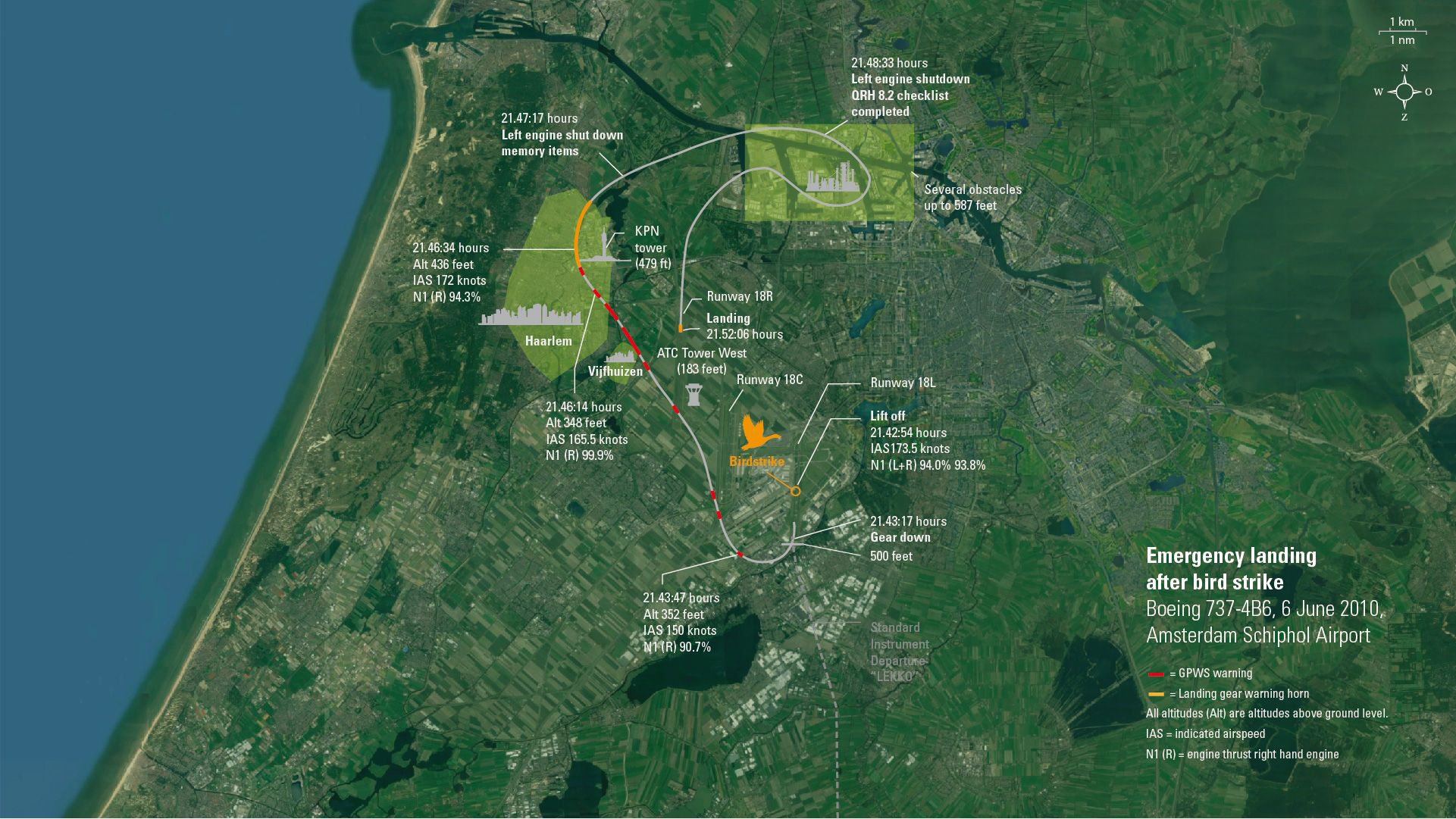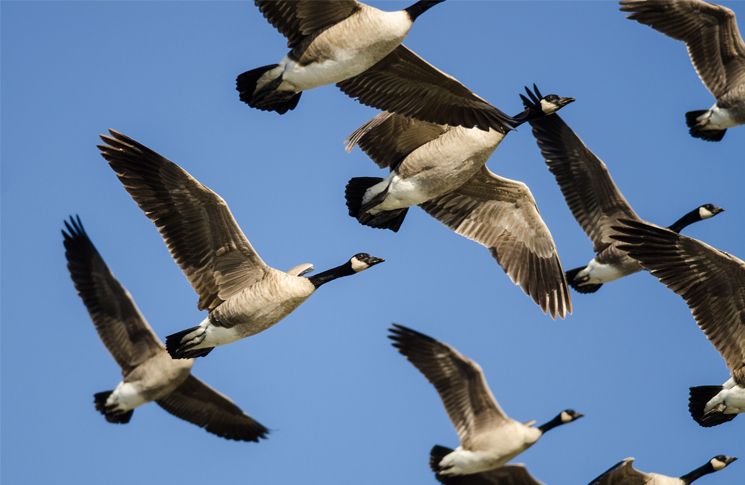Adrian Park looks at the difference between success and near disaster. It’s called training.
Every pilot wonders if they’ll have what it takes in an emergency. Every one of us wonders how we’ll respond to that sudden jolt, loud bang or metallic snap. We wonder if, in the heat of that moment, our training, our resolve and our character will be up to the challenge. Most of us will never know because, most of us will never have such a moment.
But some of us, some reading now, will be shoved into the crucible of a life-threatening emergency. And who amongst us wouldn’t want to be ‘Captain Cool’ in that crucible? That’s what the media called Chesley (Sully) Sullenberger after he successfully landed his Airbus A320 via an engines-out ditching into the Hudson River. Who wouldn’t want to have that kind of poise and acumen?
It’s an interesting question really: did Sullenberger have some secret ability or knowledge? Perhaps we can answer that by contrasting another serious bird strike some 18 months after the New York ditching. This was Flight RAM685R, a Boeing 737 with 162 people on board.
The sun was setting on 6 June 2010 when the Spanish captain taxied to the holding point of runway 18L at Amsterdam Schiphol Airport. As he completed the preparations for take-off he was given his clearance.
‘When ready, clear to line up, clear for take-off’.
After waiting for a preceding Boeing 777’s wake turbulence to clear, the captain lined up and commenced take-off. As the aircraft accelerated down the runway the visibility was down to 7000 metres. No dramas. He’d taken off in far worse conditions and this was completely workable. He scanned between the runway and the instruments checking the aircraft was accelerating normally. Everything looked fine. Everything was routine. The airspeed was increasing nicely and the engine revs for the left and right engines were normal at 94.0 per cent and 93.8 per cent. It was just another take-off on another flight on another day. He’d seen plenty of take-offs like this one in his 7000 hours of flying. But in the very next couple of seconds, ‘normal’ and ‘routine’ would dramatically depart the scene.

The first officer dutifully called ‘V1’ and the captain rotated the nose of the 737. As the aircraft cleared the ground the first officer reached out and retracted the gear. Then, as the landing gear retracted, they saw it—or rather saw them. More like rushing glimpses really. A sudden flurry of feathers and wings in the fading last light. Then another set, and another, and still another. At 171 knots neither the captain nor the first officer had time to process the images let alone react. All they could do was utter expletives, grit their teeth and hold on as multiple bangs and thuds erupted across their cockpit, fuselage, tail plane and wings. At the same time, the aircraft began to vibrate violently and what was once a responsive control yoke became heavy and sluggish. The first officer yelled something about the number 1 engine. The captain glanced down. It had rolled back to an N1 of 45.5 per cent—pretty much useless. He glanced at the number 2 engine indications. It was still at full thrust. But for how long? Another caution light suddenly demanded his attention. A nose gear unsafe indication.
He commanded the first officer to lower the gear again. The first officer complied with this instruction, despite its obvious drag and performance implications. Calculations done later by Boeing showed that even if the nose gear remained down, retracting the main gear would have increased climb capability from 200 to 480 feet per minute.
At the same time the first officer was on the radio requesting immediate turn for the field and letting out a ‘Mayday, Mayday …’
Deep down the captain knew he was supposed to have a plan for this. Deep down he knew he should be able to assess, decide and communicate his aircraft through the crisis. But he’d never seen or heard of this kind of thing before. The sim sessions he’d had were always one emergency at a time and never with this kind of impact, noise or vibration. With the aircraft barely climbing and nothing but suburbia beneath he instinctively reefed the controls to the right putting the aircraft into a tight right turn. The runway seemed to be the only safe place to be. And that meant turning through 180 degrees and repositioning. But then, because of the snap decision to roll without climbing to a good ‘clean up’ altitude, the captain had to struggle to maintain altitude as the aircraft took up a flight path dangerously low and dangerously close to the 500-foot buildings of greater Amsterdam. ‘Don’t sink!’, ‘terrain!’ and ‘pull up’ warnings sounded throughout the impromptu urban circuit.
So, what happens next? Will he (or you) be a ‘Captain Cool’?
When Flight RAM685R rotated off runway 18L at Amsterdam it rotated straight into a flock of Canada geese. (What is it about Canada Geese and big jets?) Apart from their apparent proclivity for self-destruction, it’s worth noting Canada Geese are not small birds. They grow to a length of 1.1 metres with a wingspan of 1.8 metres and a weight of 6 kg. At least seven of the geese struck the aircraft damaging the nose gear, the right main landing-gear, the vertical stabiliser and crippling the number 1 engine with fragmentation damage. With the warning lights, the failing engine, the vibrations and the uncertainty of what might fail next, the crew were well and truly in the crucible. (Flight Safety Australia has explored the topic of birdstrikes and how the rate is on the rise and ways to avoid them.)
I’ve no doubt if we were there on that flight deck we’d like to think we’d be the consummate professionals: assessing the state of the aircraft, listening to the input of the flight crew, formulating a plan, communicating clearly and even, perhaps, following up with a well-placed witticism. But that’s not what happened here. Although the aircraft landed without injury to any passengers, the investigation found the crew failed to climb to the required ‘clean up’ altitude. Instead, they made a rapid turn at 280 feet and then inexplicably reduced the thrust of the remaining engine rather than utilising the maximum available. In the words of the Dutch Safety Board, the aircraft:
Had a limited rate of climb and could not reach the necessary safe altitude. Communication and crew resource management between the crew members during the flight was not in accordance with the internationally accepted standard for airline pilots … The crew members were then under increased pressure as the autopilot may not be engaged at altitudes below 1000 feet.
Without the assist of the autopilot, and the landing gear still down, things were all the harder to manage: numerous flight path deviations in heading, altitude, flight speed and rate of climb—all while manoeuvring between 348 and 628 feet above Amsterdam.
This is not how we’d like to imagine ourselves in the crucible. We’d like to imagine ourselves as a Sullenberger. In the Amsterdam case a public outcry ensued with questions about why a stricken Boeing 737 was allowed to fly so low over Amsterdam. Many of the public had not forgotten the 1992 aircraft disaster in Amsterdam Bijlmermeer when an El Al Boeing 747 cargo aircraft ploughed into an apartment block killing 39 people on the ground in another, far harsher, crucible event.
Why then such different performances by the two captains? No doubt, there are many significant, cumulative reasons such as experience, personality type, knowledge, etc. but two contrasting comments from each of the respective investigations hint at a more direct answer. In the case of Flight RAM685R:
When a bird strike is trained at Royal Air Maroc, only a single event is trained. This means that the bird strike which is trained results in an engine failure which has to be dealt with by the crew, there will be no additional failures. Well before these trainings the crew will be briefed on which failures they can expect during the recurrent training. [Dutch Safety Board report, my emphasis]
In the case of Sully and the Hudson River ditching, American Airlines didn’t train any more regularly than Royal Air Maroc—in fact they had fewer training iterations per year—but there was a most definitive qualitative difference. John Ladd, a pilot who had flown with American Airlines for nearly two decades, in a later media article, explained how extensive the range of emergencies was prior to Sully’s ditching. In the simulator, he said, they got to practice ‘plain vanilla’ emergencies such as engine failures, wind shear, hydraulics failures, etc. but also:
Emergencies that allowed us to explore the flight envelope of the airplane … losing both engines on take-off, airplane fires, structural problems and high-speed descents …
In contrast, the pilots of Royal Air Maroc never had to deal with anything other than single event emergencies carefully pre-briefed by their instructors. American Airlines’ pilots, however, received training that, in the words of Sullenberger, ‘absolutely helped him during the accident event’ because he was trained to ‘maintain aircraft control, manage the situation, and land as soon as the situation permitted’. On the back of these comments he provided this advice to industry:
Training pilots how to respond to a dual-engine failure at a low altitude would challenge them to use critical thinking and exercise skills in task shedding, decision-making and proper workload management to achieve a successful outcome.
This was a lesson relating not just to the mechanics of a checklist drill but to training one’s mindset for undrilled, unpracticed and outside-the-checklist emergencies. Sadly, this advice went relatively unheeded. The captain of the 737 over Amsterdam had only ever completed pre-briefed, single event emergency training. Perhaps if Sullenberger’s lesson had been heeded the Royal Air Maroc captain would have had that enhanced mindset—a mindset better suited to his crucible-moment over Amsterdam where ‘task-shedding, decision making and proper workload management’ were absolutely essential.
Of course, this means there’s also a lesson for all of us. It is simply this: once we pilots have the basics down in emergency management, and it is safe and legal to do so, we need to be challenged. We need to be pushed beyond our comfort zones and given at least a hint of what things are like in the crucible. For a simulator this might be compound emergencies, unannounced extra-tasking, demanding weather contexts, unannounced crew incapacitation or anything else that turns up the heat and creates a crucible-moment in training.
It’s the old adage, we should be trained not merely what to think in an emergency but how to think.
It seems apt to finish with an explanation around my use of the metaphor ‘crucible-moment’. A crucible is a vessel capable of handling the extreme metal-purifying heat of a furnace without melting itself. There are two significant parallels.
Firstly, in a critical but recoverable aircraft emergency a pilot must be able to handle the ‘heat’ of imminent danger, bewilderment and fear without melting into indecision or panic.
Secondly, the crucible is a vessel from which comes pure gold. That’s what we saw with Sullenberger. Pure gold in crew resource management, technical competence and attitude. Pure gold from many a white hot moments in the simulator.



Comments are closed.